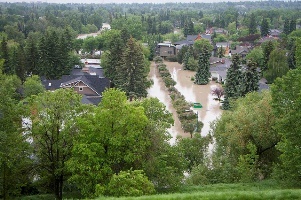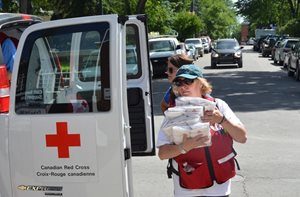With winter finally thawing, spring brings warmer weather as well as an increased risk of flooding. Floods are one of the most common and costly disasters in Canada, and the Canadian Red Cross already providing support in communities affected by flooding in some parts of the country.
Here are 10 tips on what to do in times of
flooding:
1. You can protect yourself and your family from flooding and other emergencies by
knowing the risks that are specific to your neighbourhood and community and understanding how it may impact you.

2. An important step in being prepared is having an
emergency plan that takes into account your household's needs, and discussing it with family members ahead of time.
3. Build an
emergency preparedness kit for your family which has enough supplies, such as water, non-perishable food, manual can opener, crank or battery-operated flashlight and radio, first aid kit, to sustain your family for 72 hours. You can build your kit with items you may already have in your home or buy a kit at
shop.redcross.ca.
4. Listen to local news, follow updates on social media and check weather reports for any potential flood warnings and, when a warning is issued, follow the advice of local authorities.
5. During a flood, if you are at home, turn off power and gas lines; place your valuables on the upper floor of your house; remain on the upper floor to wait for instructions from your local authorities.
6. Stay away from swollen streams and rivers as moving waters can sweep you away. Be careful when driving as puddles can be deeper than you think.
 |
|
Red Cross volunteers distributing protective items during 2013 flooding in Alberta.
|
7. After a flood, only return home when officials have declared it safe to do so. Before entering your home, look outside for any damage (loose power lines, damaged gas lines, foundation cracks etc.) and approach entrances carefully.
8. Discard any food items or water which may have been in contact with flood waters. Wear protective clothing – such as rubber boots and gloves – during cleanup. You can also consult our
Guide to Flood Recovery for additional details.
9. If you smell natural or propane gas or hear a hissing noise, leave your home immediately and call 911.
10. Get trained in first aid. Visit
www.redcross.ca/firstaid to find a course near you.
For more information on how you can be prepared for emergencies such as flooding, visit
www.redcross.ca/ready